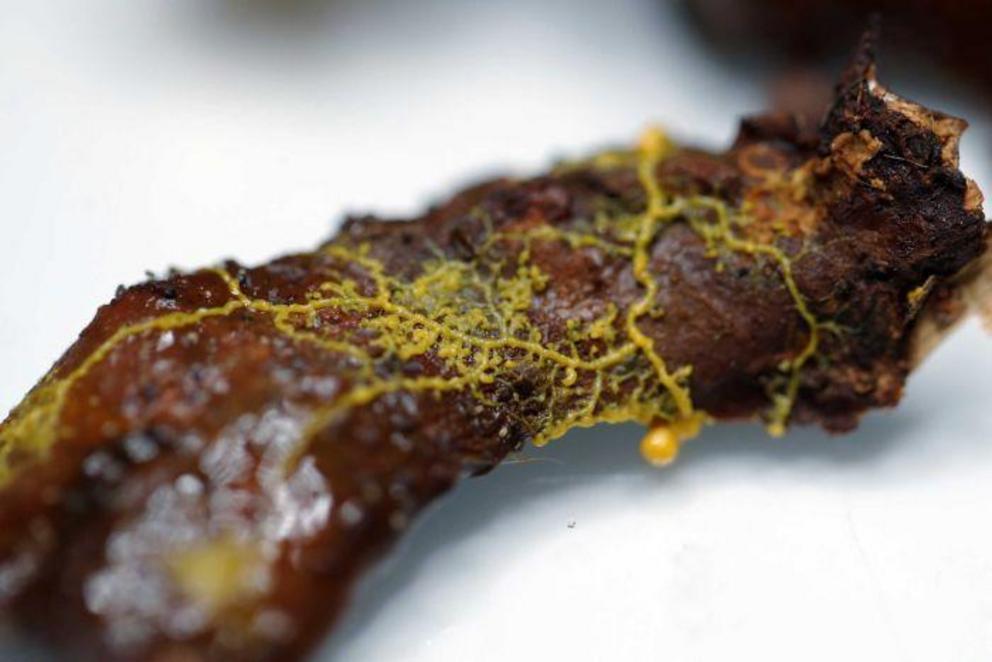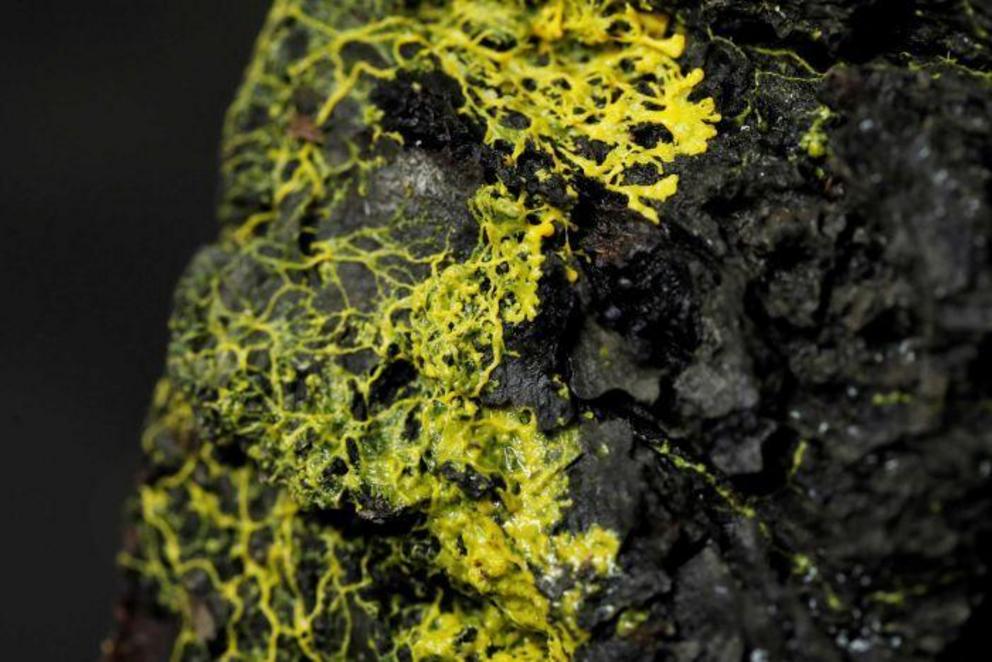Paris zoo unveils the 'blob' slime mould with 720 sexes which looks like a fungus but acts like an animal
Scientists say the blob looks like a mushroom but has the behaviour of an animal.
A Paris zoo has showcased a mysterious organism dubbed the "blob", a yellowish unicellular small living being which looks like a fungus and acts like an animal but belongs to the protist family.
Key points:
- The blob has almost 720 sexes, can move without legs and wings and heals itself in two minutes if cut
- It has no brain, but is able to transmit knowledge if merged with another blob
- It is named after 1958 science-fiction horror film The Blob
This newest exhibit of the Paris Zoological Park, which will go on display to the public this weekend, has no mouth, no stomach, no eyes, yet it can detect food and digest it.
The blob also has almost 720 sexes, can move without legs or wings and heals itself in two minutes if cut in half.
"The blob is a living being which belongs to one of nature's mysteries", said Bruno David, director of the Paris Museum of Natural History, of which the Zoological Park is part.
"It surprises us because it has no brain but is able to learn.
"If we put it in a maze, it will learn and take the best route out of the maze to find its food. If we put an obstacle in front of it — the blob hates salt, for example — it won't get past it right away, even if there is food behind it.
"Then the blob will learn how to get past the barrier and get to its food, and it will start to do this more quickly and more strongly.
"If we fuse two blobs together, the one which learned will transmit its knowledge to the other, and so, it will know directly how to get past this barrier."
Follow this story to get email or text alerts from ABC News when there is a future article following this storyline.

The blob is capable of transmitting knowledge if merged with another … blob.
The blob was named after a 1958 science-fiction horror B-movie, starring a young Steve McQueen, in which an alien life form, The Blob, consumes everything in its path in a small Pennsylvania town.
"We know for sure it is not a plant but we don't really know if it's an animal or a fungus," Mr David said.
"It behaves very surprisingly for something that looks like a mushroom … it has the behaviour of an animal, it is able to learn."
The creature is known as Physarum polycephalum, "the many-headed slime", and is one of over 900 slime moulds discovered. It is not dangerous to humans as it lives and feeds on leaves and logs.
And while scientists are not sure how it manages to move around and pick out targets, due to it lacking a central nervous system, they have suggested it may utilise electrical signals.
Slime moulds are also rather common in Australia with Tasmania being a hotbed of the organisms, where more than 100 species live and are renowned for their bright colours.
Reuters

